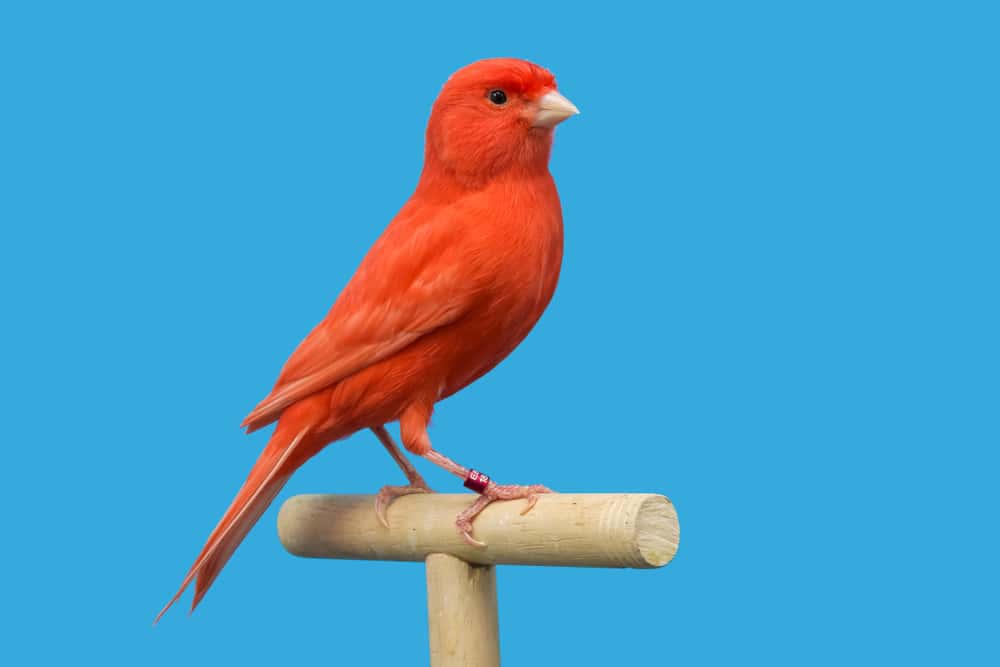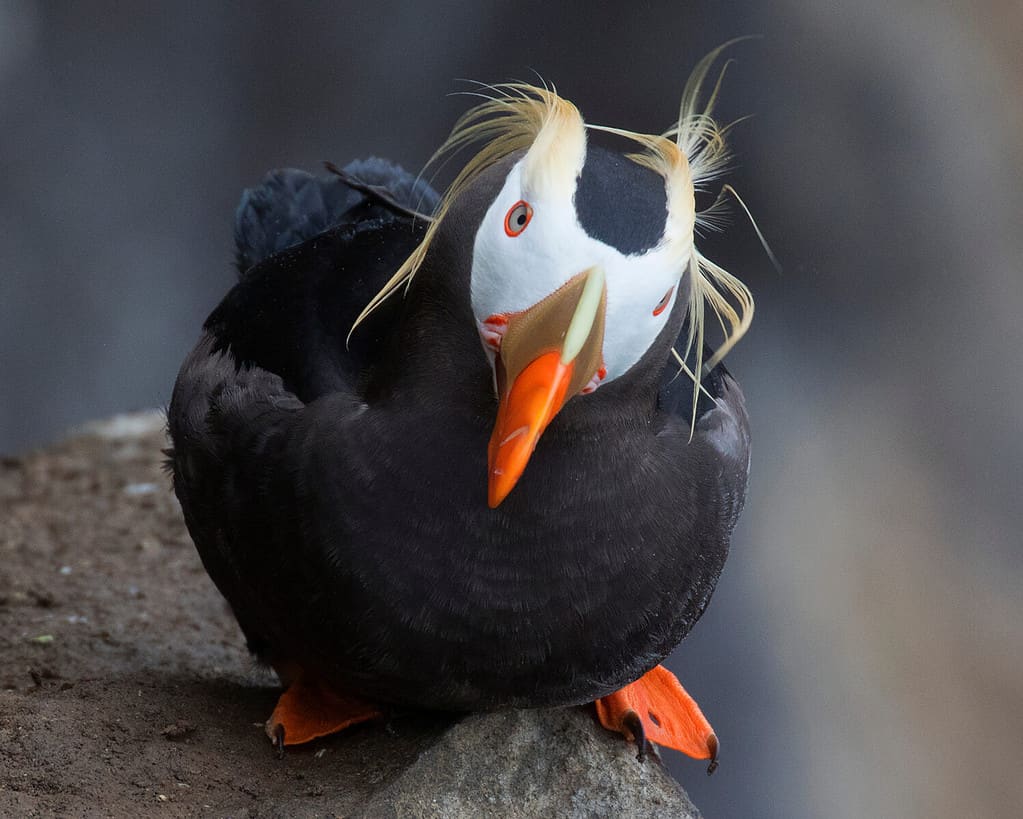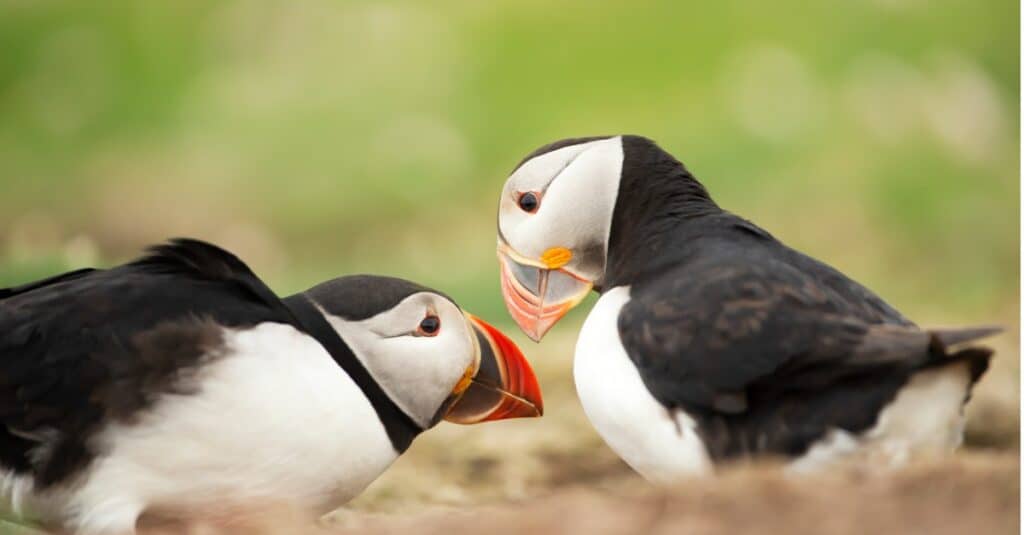In Southern Africa, where the Zulu, Pondo, and Xhosa people live, a mythical creature called the lightning bird is part of the local mythology. As its name suggests, the bird has the power to summon lightning from the heavens as well as thunder. Legends, however, have a way of becoming distorted and discombobulated over time, and such is the case with the lightning bird. Many claim the creature is as tall as a human, with black and white feathers. Others have said it has red legs, a red tail, and, most starkly, a red beak.
Another mythical bird — the Boobrie — a malevolent, shape-shifting creature that preys on livestock, devouring lambs and sheep, supposedly lived on the Scottish highlands. According to some accounts, the Boobrie was a menacing-looking creature also with a red beak. While most legends always have a kernel of truth, these crimson-beaked birds are ephemeral. “He is ravenous and gigantic,” one person who never saw the bird himself wrote. The bird “gobbles up sheep and cows, has webbed feet and a very loud hoarse voice…”
But there are other red-beak birds that we can see every day. What are they? Where are they? Read along, and we’ll provide you with a complete list of 5 birds of the most common birds with a red beak.
Seeing Red
Before we do that, let’s see why some birds blaze blood and others don’t. For some, red feathers or a red beak is a sign of health and fitness. In others, red can either attract a mate or tell a rival to get lost. While these theories may hold true, they don’t go to the heart of why some birds are cloaked in red. It seems, according to some scientists, that chemistry plays an important part.
A few years ago, researchers studied several species of red birds. They concluded that those that dined on plants laden with yellow carotenoids can chemically cook up a red pigment that sets them apart from the rest of the avian population.
Researchers sequenced the genes of birds that produced the red compounds and compared them against those that couldn’t. One team studied red canaries, which came into existence about 100 years ago when breeders paired yellow canaries with red siskins, a small red finch with vibrant plumage and a dark black head.
They found the red siskin passed genes that produced a red pigment onto the red canaries. Specifically, the red canaries had an abundance of an enzyme (used to break down toxins) that turned yellow to red. In fact, the level of that enzyme in these red canaries was a thousand times higher than in the yellow canaries. A second team of researchers reached the same conclusion after studying zebra finches, which have bright reddish/orange beaks.
Now that we know what are some instances that make birds and their beaks red, let’s look at 5 of the most colorful.

Red canaries are red because they have an enzyme that turns yellow to crimson.
©Fernando Zamora Vega/Shutterstock.com
1. Northern Cardinal (Cardinalis cardinalis)
The Northern cardinal is perhaps the most well-known red-beaked bird in North America, as its habitat encompasses nearly two-thirds of the United States and most of the east coast of Mexico all the way to the Yucatan. Both males and females, who always travel in pairs, are well-known in backyards as they are mainstays at birdfeeders, especially when filled with sunflower seeds.
Adult males are bright red, while females are mostly reddish brown. Both have prominent red beaks. Of the two, the female is the songstress, whistling away while she nests. Experts say when the female belts out a tune, she is giving her mate the 411 on when to bring dinner home. Cardinals are also very territorial, especially in the spring and summer, which is why you may see them attack their reflection in a garage window or the side mirror of a car. They are simply protecting their territory against any and all intruders, imaginary or not.

The Northern Cardinal is a backyard favorite as it is not shy about eating from feeders.
©Ami Parikh/Shutterstock.com
2. Tufted Puffins (Fratercula cirrhata)
If you ever take a boat ride off the coast of Alaska, the west coast of Canada, or the Northwest coast of the United States, you will see flocks of Tufted Puffins. These birds love the coast and will spend their entire lives away on craggy islands in the open sea. They make their nests on the edges of cliffs, burrowing deep inside.
Tufted Puffins are very colorful. They have black feathers, although their heads are white. Both colors compliment their red beaks. Small fish are the treat of choice for this bird. They will unfurl their wings and dive under the water, sometimes as deep as 360 feet. While under the water, the bird will eat their catch. They prey on herring, cod, pollack, anchovy, and many other species. When it is time to breed, the Tufted Puffin will bring up nearly two dozen fish at one time so its chicks can eat. Puffins are very communal and will forge in immense numbers alongside other seabirds.

Tufted puffins make their home along the west coast of the United States and Canada.
©rbrown10/Shutterstock.com
3. Atlantic Puffin (Fratercula arctica)
Don’t confuse the Tufted Puffin with the Atlantic Puffin. For one thing, the Atlantic Puffin lives, well, on the Atlantic side of North America, specifically the northern coast of New England well into the Canadian Maritimes, all the way to the tip of Greenland.
The two birds basically don the same black and white feathers. Still, their beaks are a bit different. While the beak of the Tufted Puffin is a bright red, the bill of the Atlantic Puffin is multicolored, sometimes with striations of white and yellow. More grooves appear on the animal’s bill as it gets larger. Like their cousins out west, the Atlantic Puffin burrows into the sides of rocky ledges and on sea cliffs.

Atlantic puffin mates strengthen their bond by billing or rattling their beaks together.
©Giedriius/Shutterstock.com
4. Broad-billed Hummingbird (Cynanthus latirostris)
Talk about color. The Broad-billed hummingbird, which nests throughout Mexico, especially near the Pacific coast, is a technicolor marvel with an explosion of blue and green hues. Yet, it is the bright red beak of the male that makes this tiny nectar-loving bird stand out.
Although it mainly resides in Mexico, the Broad-billed hummingbird’s range extends into the southern western United States when it is time to breed. The bird will nest along canyon streams and forage in mountain meadows that can tower 9,800 feet above sea level. They do this mostly in the summer after the rains jumpstart the blooming of flowers. In Mexico, the Broad-billed hummingbird lives in various habitats, from mountain canyons to deciduous forests.
Hummingbirds are amazing creatures; their wings rapidly flap as the creature seeks its food in the sweet nectar of flowers. A Broad-billed hummingbird will slurp up to 1.7 times its body weight in the sweet juice each day. They’ll eat in the morning and in the late afternoon when nectar production is at its peak. The birds also dine on insects. The male, with its red beak aglow, will call for the female when it is time to breed. The male will then do a little dance, flying in an arc back and forth like a clock’s pendulum in front of her.

The Broad-billed hummingbird is a technicolor marvel that can eat 1.7 times its weight in nectar.
©Monir Hossain/iStock via Getty Images
5. Black Swan (Cygnus atratus)
While the Broad-billed hummingbird zips in and out and is sometimes hard to get a good look at, the Black Swan is beyond noticeable. It is large. It is black. It has a red bill with a white line across. You can’t miss it. The swan is a native of Australia and Tasmania, although the species has been introduced to New Zealand. Regardless, Black Swans can be found pretty much anywhere, including Europe, Japan, and Singapore.
Like most swans, the Black Swan is very graceful with a long neck. They typically nest in June and July, building nests at the edge of water. They will stitch their nests out of dry straw and whatever weeds are available. Their homes are huge, sometimes reaching five feet across.
Greens are the food of choice for the Black Swan, including algae and different types of aquatic plants. They also like to chow down on grasses near the water. Males and females will mate for life and live in a monogamous relationship. Juveniles, however, will play the field until they get older and settle down with one partner. Experts estimate the total Black Swan population is between 100,000 to 1 million.

Black swan swimming in a pond in Slovakia.
©efirm/Shutterstock.com
The photo featured at the top of this post is © Bonnie Taylor Barry/Shutterstock.com
Thank you for reading! Have some feedback for us? Contact the AZ Animals editorial team.






